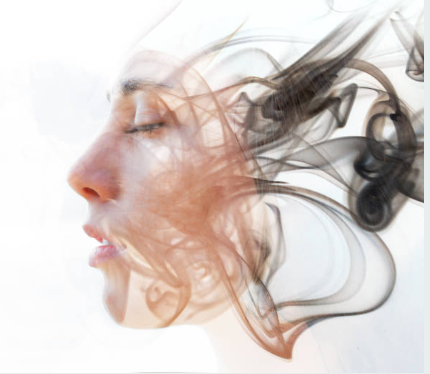Affirmations for Positivity
Generally speaking, hypnosis is a process that helps people to achieve an altered state of consciousness. This is achieved through the use of various methods. These methods include hypnotic induction, guided imagery, and regression.

Selfpause Affirmation App
Download the app to get 1,000’s of affirmation meditations and everything you need to write, record and listen to your own.
History

During the nineteenth century, hypnosis became an important tool in medicine. It was studied in the great universities of the day. Hypnosis was used as an anesthetic, to induce sleep, and for healing purposes.
Early hypnosis was mainly animal hypnosis. In the 1600s, farmers calmed chickens hypnotically. Later, sleep temples were built in Greece to honor Aesculapius, a Greek god of sleep. Hypnosis was used by ancient oracles to divine the future. It was also used by shamans to communicate with gods.
After Mesmer, many scientists became interested in the use of hypnosis for healing. Jean-Martin Charcot and Emile Coue are two of the most famous. Charcot’s technique was focused on auto-suggestion, whereas Coue’s technique was affirmation.
In the late 1700s, hypnotherapy moved away from mysticism and towards scientific research. The Marquis de Puysegur tried to induce artificial somnambulism in patients.
Later, James Esdaile proved that hypnosis was effective. He used it as the sole anesthetic in hundreds of major operations. His findings were later published in medical journals. The public, however, were not convinced that it was helpful. It was considered a dangerous interest for doctors and mainstream careers.
In the late 1800s, hypnosis became more widespread. It was used for pain management in World War II and Post Traumatic Stress Disorder. It was also used for healing wounds during the American Civil War. It was studied in some of the greatest hospitals of the day.
Hypnosis became a controversial subject in academic circles. It was considered a form of occultism. Many feared that hypnosis could cause mind control and miracles. It also became a method of performing magic.
Hypnosis was a subject of endless academic debate. It was eventually deemed sterile.
Trance state

Using hypnosis is one way to eliminate unwanted habits and improve self confidence. It is a powerful tool for self improvement and can also be used to heal past trauma.
Trance states are an altered state of consciousness that can be induced through various techniques. They are often compared to daydreaming. They are also characterized by relaxation and extreme suggestibility.
When you are in a trance, you become a passive observer. You may experience tunnel vision and may lag in time when you carry out suggestions. You may also swallow.
The first step is to become aware of what trance means. The most obvious sign of trance is the ability to daydream. Some people daydream while they drive, but this is not the same as trance.
Other signs include warm body heat and the loss of peripheral vision. You may also experience a temporary increase in your pulse rate.
You may also experience changes in size, color and shape. This may be due to hypnosis. You may also experience reddening of the eyes. This is not a glassy eyed state, but rather the result of relaxing the muscles.
To achieve a trance state, you will need to concentrate. You can do this by relaxing your muscles and by not engaging in distracting thoughts. You can also use breathing exercises to deepen your trance.
One of the best ways to induce a trance is to use a visualization. A common method is to visualize yourself flying through the sky. You can also create your own visualization. You can visualize a staircase, a tree or a light filling your head.
The pendulum is also a great way to induce a trance. You can also use drums.
Effects on the brain

Several studies have been conducted to analyze the effects of hypnosis on the brain. The results have revealed that hypnosis has a profound effect on the brain.
Hypnosis is said to produce an enhanced arousal in the brain. It also changes the connectivity between the large neural network and the ACC. These two networks are responsible for your sense of self and your body’s responses to your environment.
Hypnosis may also alter cognitive modulation of motor systems and affect motor imagery. These effects are likely to contribute to improved outcomes for patients and can be used in conjunction with other coping therapies. Hypnosis can be a useful tool to help manage pain during childbirth or to stop smoking.
Brain scans of hypnotizable subjects demonstrate a significant decrease in rCBF in the insula and dorsal anterior cingulate cortex. This brain region is a member of the salience network, which processes emotion and cognition.
The dorsolateral prefrontal cortex also displays a notable increase in activity during hypnosis. This part of the brain connects with the insula, which is involved in context evaluation and somatic function. The dorsolateral prefrontal brain region also has fewer connections to the medial prefrontal cortex. This area also displays a reduction in rCBF subtraction during hypnosis.
Although the hypnosis effects are obvious, researchers haven’t yet determined exactly how it works. However, preliminary brain scans show a definite biological basis for the process. These changes may explain why hypnosis works so well.
There are several ways to conduct a brain imaging study of hypnosis. The design of the study can have dramatic effects on the results. The most obvious method is to scan subjects when they are hypnotized.
Illnesses hypnosis can help with

Whether you have a chronic disease or have been through a painful procedure, hypnosis can help. Hypnosis can reduce anxiety and pain and may help you recover more quickly. It can help you cope with stress and reduce problematic behaviors. It can help you overcome depression and other mental illnesses.
Several studies have found that hypnosis can help with pain. For instance, hypnosis can help with migraines and tension headaches. It can also help with pain related to fibromyalgia and menopause. Hypnosis can also help with nausea and vomiting during chemotherapy.
Studies have also found that hypnosis helps with anxiety. The National Institutes of Health recommended hypnotherapy for chronic pain in 1995. Hypnosis has also been found to help people with IBS, depression and post-traumatic stress disorder.
Medical hypnosis usually involves two parts: a first part that involves getting the patient to focus on something. The second part involves encouraging the patient to use their natural relaxation response.
During hypnosis, the patient is encouraged to imagine pleasant experiences. Most hypnosis includes suggestions to relax and increase well-being. In addition, the hypnotherapist will provide soothing imagery. Hypnosis isn’t mind control, but it does help change your thinking pattern and can help you achieve your goals.
Studies have shown that hypnosis can also help manage the pain associated with childbirth. It can also help with post-surgical recovery and nausea and vomiting. Hypnosis can be useful for people who suffer from chronic pain, such as fibromyalgia or arthritis.
Hypnosis can also help people with anxiety before a medical procedure. For instance, hypnosis has been found to reduce the anxiety of patients prior to having a breast biopsy.
Unhelpful for some people

Despite its widespread use, hypnosis isn’t for everyone. The key is to find the right hypnotherapist.
Some people may be unsuited to hypnosis because of a mental illness or addiction. Others may have too much suggestibility. Hypnosis isn’t a cure for anything. It’s a way to help manage pain, stress, and anxiety. It’s also an effective technique for smoking cessation and weight loss.
Hypnosis is also a way to help a person deal with the side effects of cancer treatment. It can help a person cope with the stress of chemotherapy, and it can also help them feel more comfortable while undergoing treatments.
Some people may experience negative side effects from hypnosis, such as anxiety, insomnia, and delusional thinking. Hypnosis can also create false memories.
Some people may also experience unpleasant side effects such as headaches, nausea, or uncontrolled weeping. This is because hypnosis is a non-natural state of mind. Hypnosis can be used in conjunction with other techniques, such as biofeedback and meditation.
Some people may feel hypnotized by an ego-driven therapist. The therapist may tell the person that they are “talented,” or “desirable.” This can be a problem. In extreme cases, people may think of themselves as something, such as a “thing” or a “person.” They may also commit psychic murder.
Some doctors are trained in hypnosis. Some may even use it as a standalone treatment. However, some studies have shown that it’s not a miracle cure.
Some studies have found that hypnosis may not be effective for people with severe mental illness. Hypnosis is also not effective for managing stressful early life events. People who are more suggestible may also be more affected.
Our Top FAQ's
Hypnosis is a state of consciousness in which a person becomes more focused, attentive, and open to suggestion. It is typically induced by a trained hypnotherapist through verbal repetition and mental imagery. During hypnosis, the person’s attention is narrowed and they may be more responsive to suggestion, but they remain aware and in control of their actions.
Most people can be hypnotized to some degree, although the depth of hypnosis can vary from person to person. Some people may be more susceptible to hypnosis than others, but anyone can learn to enter into a hypnotic state with the right guidance and practice.
Hypnosis has been shown to be effective for a wide range of issues, including reducing anxiety, relieving pain, quitting smoking, and improving sleep. It has also been used to help people overcome phobias, improve performance, and manage stress.
While hypnosis is generally considered to be safe, it is important to work with a trained and licensed hypnotherapist. Some people may experience negative side effects or discomfort during hypnosis, and it is not recommended for those with certain mental or physical conditions.
Hypnosis is often used as an adjunctive treatment in a variety of medical and therapeutic settings. It is sometimes used in combination with other treatments, such as cognitive-behavioral therapy or medication, to help people address a wide range of issues. Hypnosis is also sometimes used in pain management and childbirth, among other medical applications.
